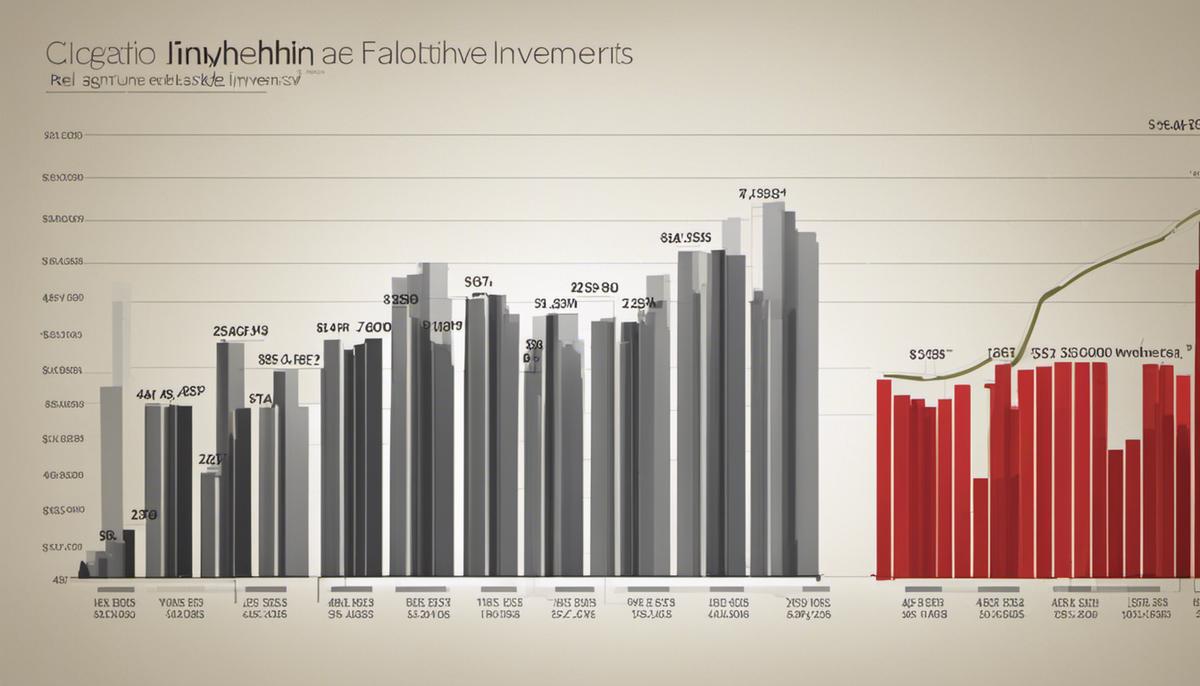Investing in the world of Real Estate Investment Trusts (REITs) is a pursuit lined with immense potential but it is not devoid of complexities. Through disciplines such as understanding REIT structures, analyzing market conditions, optimizing profits, navigating risks and comparing REITs to traditional real estate investments, an individual can equip themselves with the necessary knowledge to traverse this convoluted landscape. Whether you are a novice investor commencing your financial journey or an established player in the capital market, this exploration will provide a comprehensive guide to assist you in making more informed and astute REIT investment decisions.
Table of Contents
Understanding REIT Structures
Headlining the investment universe in recent years is an intriguing investment vehicle that has sent ripples through the financial waterbed – Real Estate Investment Trusts (REITs). For the uninitiated, these are companies that own, and in most cases, operate income-producing real estate.
Right out of the gate, REITs present exciting opportunities for investors, flipping the script on traditionally held views of real estate investment. Market participants and industry critics alike are quickly waking up to the unique offerings of these structures, and here’s why you should too.
One of the most distinctive attributes of REITs is the shielding against inflation. When the economy begins to grow too fast and prices rise, interest rates tend to follow. This often equates to trouble for other asset classes. However, with a REIT structure, as inflation increases, so can rents, which can then lead to higher property values, boosting REIT dividends. It’s a refreshing anomaly in the investment world, presenting clear avenues for maintaining purchasing power during inflationary periods.
Moreover, REITs offer extraordinary access. A significant hurdle for anyone looking to get into the conventional real estate market is the high upfront capital required. But with REITs? Not so. This structure opens the door to investing in large scale, diversified portfolios of real estate assets, such as shopping centers or office buildings. Investors have the unprecedented opportunity to dip their toes in real estate markets, without the hefty price tag traditionally associated with direct ownership.
Let’s not overlook the enticing draw of liquidity. Real estate as a physical commodity isn’t exactly known for being readily convertible to cash. In stark contrast, the structure of public REITs allows investors to buy and sell shares effortlessly on the stock exchange, much like any other stock. This speaks to a broader audience, presenting a path to engage with the real estate market without committing to long-term investments.
In addition, the income stability that REITs provide, thanks to their requisite regulation of distributing at least 90% of their taxable income annually in dividends to shareholders, proves to be a boon for those investors who value consistent cash flows.
Finally, tax efficiency must be mentioned. Operating as REITs, these companies can dodge the corporate income tax bullet altogether. This absence of double taxation commonly found in other corporations makes REITs a tax-efficient avenue for investors.
In the last analysis, the novelty of REITs lies not only in their sturdy framework allowing investors to withstand financial storms like inflation but also in the unrivaled blend of accessibility, liquidity, income stability, and tax efficiency they offer. They are a breath of fresh air in the investment landscape, rewriting the rules for real estate investment potential.
Investors keeping pace with the financial zeitgeist must keep an eye on REITs, a game-changer subtly reshaping the investment terrain, arming investors for the challenges of the evolving financial landscape even while reimagining the rules of real estate investment.

Analyzing REIT Market Conditions
Investing in REITs is certainly a strategic proposition, offering a dynamic trifecta of income stability, liquidity, and the protection against inflation. However, as any astute entrepreneur can tell you, market conditions can significantly influence these REIT investments. Understanding these conditions and keeping a vigilant eye on industry trends is a critical strategy that should be employed by any discerning investor interested in effectively managing their REIT portfolio.
One major influence on REITs is the interest rate environment. It’s an intuitive connection, really: as interest rates rise, the cost of borrowing increases which can impact real estate values and subsequently, REIT return rates. The adverse effect is also true; declining interest rates often encourage more borrowing and are generally a boon for the real estate market. However, it’s not always a direct correlation. A sharp-eyed investor will also consider the durations of these interest rate changes, whether they’re temporary or more long-standing, as lasting changes can significantly shift investment landscapes.
Another factor is the economic health of the nation, which unquestionably impacts the demand for real estate and, by extension, the performance of REITs. During robust economic periods, businesses often seek expansion, stimulate demand in commercial properties, and increase REIT profits. Conversely, when economic turmoil or recession hits, real estate demand diminishes in tandem.
Let’s not overlook sector-specific developments. The rise of e-commerce, for example, has had a significant effect on retail and industrial REITs. While brick-and-mortar retail spaces struggle with declining foot traffic and changing consumer habits, demand for warehouses and distribution centers has spiked. As a result, corresponding REITs have seen similar upward and downward trends.
Investors must also consider escalating global trends. Take, for example, the shift towards a greener economy. Green building trends are impacting the real estate market and intrinsically affecting REIT performance. Buildings that are not up to the mark environmentally could become less profitable as more consumers and tenants move toward sustainability. Clever investors had better keep pace with such trend shifts, acting swiftly to ensure they’re not left behind.
In summary, while REITs do present attractive benefits, such as hedge against inflation and income consistency, they are not impervious to the ever-changing winds of the market. A keen awareness of changing interest rates, economic health, sector-specific developments, and emergent global trends will arm daredevil investors with strategic insights to steer their investments through stormy seas.
Remember, to be successful in the throbbing nerve center that is the stock market, one needs to be more than just financially savvy. The fortitude to endure market fluctuations, the diligence to track industry trends and developments, and the acumen to implement strategic maneuvers to safeguard benefits are all part and parcel of a successful investor’s tool kit.

Profit Optimization in REITs
Leveraging Diversification Strategies for Greater REIT Returns
To maximize profits in REIT investment, diversification is a formidable tool in your investor arsenal. This can often be achieved by anchoring your investments across different types of REITs such as commercial, retail, residential, or healthcare, spread across a variety of locales. A well-diversified REIT portfolio efficiently mitigates risks associated with a potential downturn in one or more sectors or regions. It should be understood that, like all investment decisions, a carefully calculated and well-researched approach will yield the best results.
Understanding Market Cycles for Timely REIT Investments
Timing is crucial when investing in real estate, and by extension REITs. Profits are often optimized by investing during a slump in the real estate cycle and selling during a boom. This necessitates knowledge of macroeconomic indicators and real estate trends, as well as a crucial understanding of the fundamentals of the economic health of the nation. A finely-tuned awareness of the ever-changing real estate market will prove essential in reaping the largest possible profits from your REIT investments.
Capitalizing on Distress Situations
Occasionally, real estate markets encounter distress, often resulting from circumstances like economic downturns. While these situations may initially seem unfavorable, they often present an opportunity for astute investors. Distressed REITs can often be acquired at a bargain, and held until the market recovers, at which time they provide substantial gains.
Embracing Technological Developments
Staying abreast of technological advancements impacting the real estate sector can significantly boost the performance of your REIT investments. The rise of PropTech (“property technology”) – property-centric technology applications bringing innovative changes to the real estate market – can deliver both immediate and long-term advantages. For instance, it drives operational efficiencies and enables more informed investment decisions through big data and analytics.
Tailoring Investment Strategies to Match Current Trends
In-sight into burgeoning trends like the rise of flexible workspaces, sustainability, and e-commerce can guide your REIT investments towards profitability. For example, industrial REITs housing distribution centers for e-commerce may be an appealing opportunity in today’s digital age. Furthermore, tapping into the growing trend towards sustainability by investing in green building REITs can also prove profitable.
Harnessing the Power of Professional Expertise
The engagement of experts and advisors who are well-versed with the volatility of the real estate market may warrant consideration. Advisors possessing vast industry experience can offer valuable guidance, leading to informed decisions capable of maximizing the return of your REIT investments.
In conclusion, to optimize REIT profits, adopt a broad yet detailed perspective. Diversify and time your investments wisely. Seize opportunity in distress situations, stay updated with technological advances, tailor your investments to current trends, and harness professional expertise. Above all, exercise due diligence and patience. Remember, fruitful investments typically require both good judgment and time to mature. By fusing these strategies, your REIT investments have the potential for strong returns.

Navigating REIT Risks
As every savvy investor knows, no high-return investment comes without its share of risks. Having established the benefits and potential factors influencing Real Estate Investment Trusts (REITs), let’s delve into the challenges associated with this lucrative investment vehicle, and more importantly, strategies to mitigate these risks.
A major risk inherent in REITs is property market downturns. Just as real estate can add stability to a portfolio, it can be a driver of considerable instability. The fate of REITs is inevitably tied to the health of the real estate market. In a slump, the assets underpinning the REIT can rapidly depreciate, leading to a decrease in share prices and, in some cases, affecting those lucrative dividends. Mitigation? Diversify, diverge, and conquer. Investment in REITs should be part of a meticulously diversified portfolio to absorb market vibrations adeptly.
Another significant risk factor is interest rates fluctuations. REITs are popular for their dividends attracted from rent. When interest rates rise, the cost of borrowing increases, affecting profitability. Moreover, high interest rates may also make bonds and other fixed-income investments more appealing, potentially pulling investors away from REITs. How to combat this? The answer lies in staying agile and educated. Keeping a hawk-eye on monetary policies and interest rate tendencies can ensure timely alterations to investment strategies.
Then comes the challenge of sector-specific risks. For instance, if you’ve invested heavily in a retail REIT, and a recession hits, your investment would be directly impacted by the consequential dip in consumer spending. The approach to mitigate this lies in sector diversification – spreading investments across retail, residential, commercial and specialty REITs.
Next in is geographic risk. If a REIT is tied to real estate in a specific region, it becomes susceptible to any detrimental geographic-specific events. The key to reducing this risk lies in global diversification. Consider REITs that invest in properties located in different countries or continents.
Tied in with sector-specific risk is tenant risk – too high a concentration of revenue from a single tenant can leave the REIT vulnerable. Ensure that the REIT has a well-diversified tenant base, thereby minimizing the impact of a single tenant’s failure to pay rent.
Or consider the relatively new risk of technological disruption. Emerging technologies like e-commerce and remote working can significantly impact certain types of real estate, like retail spaces and offices. Staying ahead of the curve by keeping abreast with technological trends, and positioning investment in accordance is key.
Lastly, there’s the risk of REIT management. The performance of a REIT often hinges on the expertise and acumen of its management team. While it may be a challenge to assess this intangible aspect, consider factors like track record, years of experience in real estate, and management’s stake in the REIT.
In conclusion, while REITs do pose risks, risk is inherent in all investments. The key to prosperous REIT investing lies in risk assessment and applying strategic methods of mitigation. Diversification strategies, understanding market fluctuations, leveraging expertise, and staying atop of evolving trends, can serve to safeguard, and potentially enhance REIT investment returns. Remember, the better equipped an investor is at handling potential roadblocks, the smoother their journey to financial success. And isn’t that the ultimate goal?

REITs vs. Traditional Real Estate Investments
In this ever-evolving investment landscape, we can’t overlook the crucial role that Real Estate Investment Trusts (REITs) play. When compared to traditional real estate investments, REITs present distinct advantages that must be acknowledged.
First, let’s take a moment to consider the risk factors associated with traditional real estate investments. These can range from property market downturns and fluctuating interest rates, to tenant risks and sector-specific risks. There is also the issue of geographic risk, where the location-specific dynamics can heavily influence investment outcomes.
Another element to consider is the risk of technological disruption. Software advancements are transforming industries at an exceptional rate, and real estate is not immune. From smart buildings to landlord apps, the technological changes in real estate can pose as both a risk and opportunity to investors.
With REITs, these risks can be somewhat mitigated. In fact, diversification—one of the cardinal rules in investing—forms an inherent part of REIT structure. Most REITs own a portfolio of properties spread across different locations and sectors, enabling an inherent risk spread compared to traditional investments where capital is tied to a single property.
Understanding market fluctuations is integral to successful investing in both real estate and REITs. However, while direct property investments can be less liquid and slower to respond, REITs are traded on major stock exchanges. This presents an opportunity for investors to react quickly to market developments, a leverage point that is absent in traditional real estate investments.
The potential to leverage expertise is another distinct advantage of REITs. Professionally managed, REITs come with a raft of inbuilt knowledge about property investment, management, and market analysis. This can be highly beneficial, especially for new investors seeking to navigate the real estate market.
Staying informed about technological trends is integral to successful investing, and this is no different with REIT investments. With the real estate industry becoming increasingly digitalized, REITs that capitalize on this trend by investing in data centers, logistics facilities, and tech-focused office spaces could represent lucrative future-proofing strategies for investors.
In conclusion, when compared to traditional real estate investment, REITs stand firm with distinct benefits. They offer greater liquidity, added diversification, and the advantage of professional expertise. But like all investment vehicles, they demand careful consideration of market trends and potential risks. As the real estate industry continues to innovate and evolve, so does the potential for dynamic and profitable REIT investments. Ensuring that you stay ahead of these trends will put you in the best position to maximize your investment returns.

Given the complex and dynamic landscape of REIT investing, having a comprehensive understanding of the fundamentals is pivotal. These foundations include understanding REIT structures, recognizing and interpreting market conditions, employing strategies for profit optimization, navigating risks, and drawing strategic comparisons between REITs and traditional real estate investments. With this meticulous approach and knowledge, you, as an investor, can better navigate these complexities and seize optimal opportunities in a way that resonates with your investment goals, preferences and risk tolerance, thereby empowering you to thrive in the challenging yet rewarding frontier of REIT investments.

Lian Jadepeak is a Chartered Financial Analyst (CFA) with a sharp acumen for investment strategies and financial markets. With a background in finance and years of experience in wealth management, Lian offers readers expert insights into smart investing, market trends, and portfolio management. Her clear, analytical approach helps demystify complex investment concepts for both seasoned and novice investors alike.

